SecureAuth Support Portal
SecureAuth's Support Portal is a user-friendly platform on which customers can submit, track, and manage tickets to communicate with SecureAuth Support Engineers for quick and efficient product support.
Supported products
SecureAuth currently provides support for the following products:
Arculix products (formerly Acceptto)
SecureAuth Identity Platform releases 19.07 and later
SecureAuth IdP versions 9.2 and 9.3 (only for customers with Extended Support accounts)
Note
To learn more about product support lifecycles, see Support Lifecycle Policy and End of Life Dates.
To learn more about support eligibility and our support and maintenance policy, see Standard Global Support & Maintenance Policy.
To learn more about the incident response process, see SecureAuth Cloud Incident Response Process.
Create account
Before accessing the Support Portal, all customers must create an account.
Go to support.secureauth.com.
On the Portal Homepage, click Sign In at the top right.
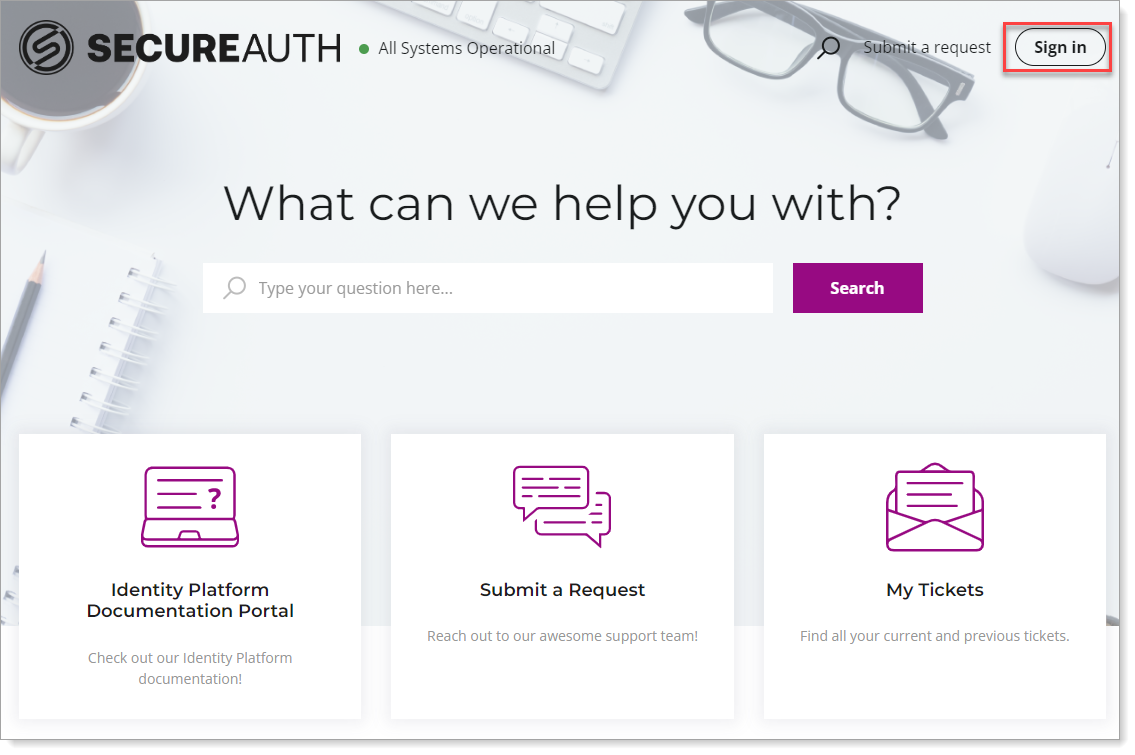
Click Sign up as a New to SecureAuth Support user.
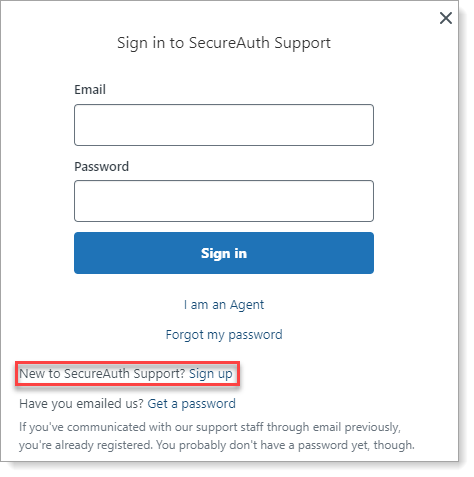
Enter Your full name and Your email. If prompted, select the checkbox to confirm that you are not a robot.
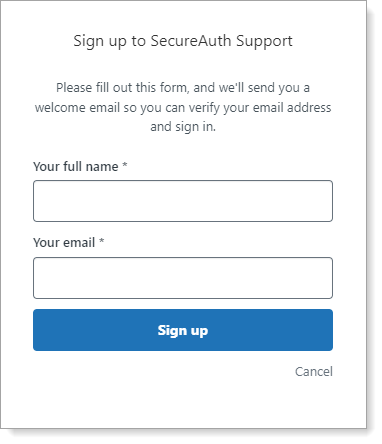
Click Sign up.
You will receive an email from SecureAuth to complete your registration. Click the Create a password link and then create your password.
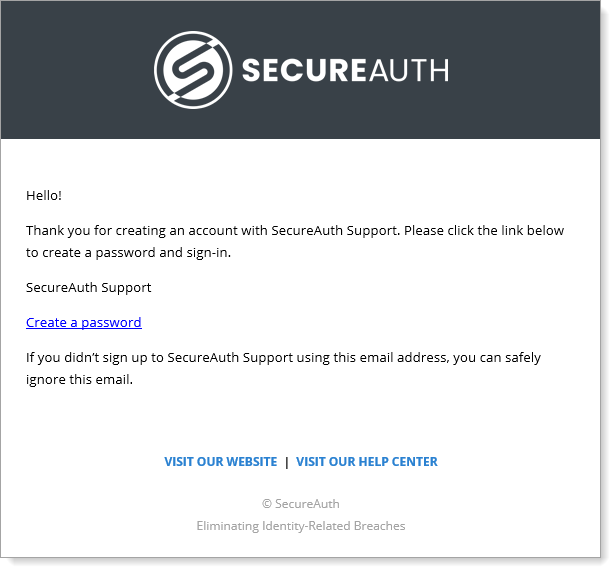
Manage account
Manage accounts by clicking your username at the top right. From there, you can perform any of the following tasks:
Select My Activities to view the information, such as who you are following and being followed by, votes, subscriptions, and more.
Select Edit My Profile to view statistics around the number of tickets you have submitted.
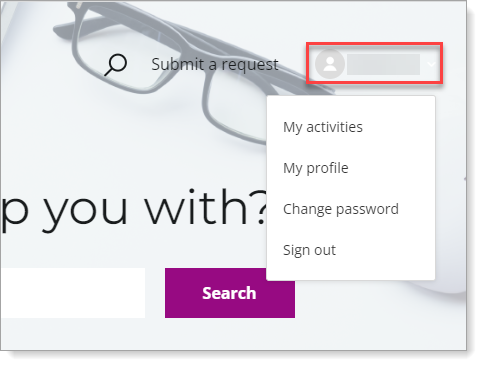
Submit a ticket
Support tickets submitted to SecureAuth can range from upgrade requests to login errors. After a ticket is submitted, SecureAuth Support Engineers receive the information and can reply directly through the Portal.
Complete the following steps to initiate a support ticket:
On the Portal homepage, click Submit a Request.
Notice
Sign in is required before submitting a request.
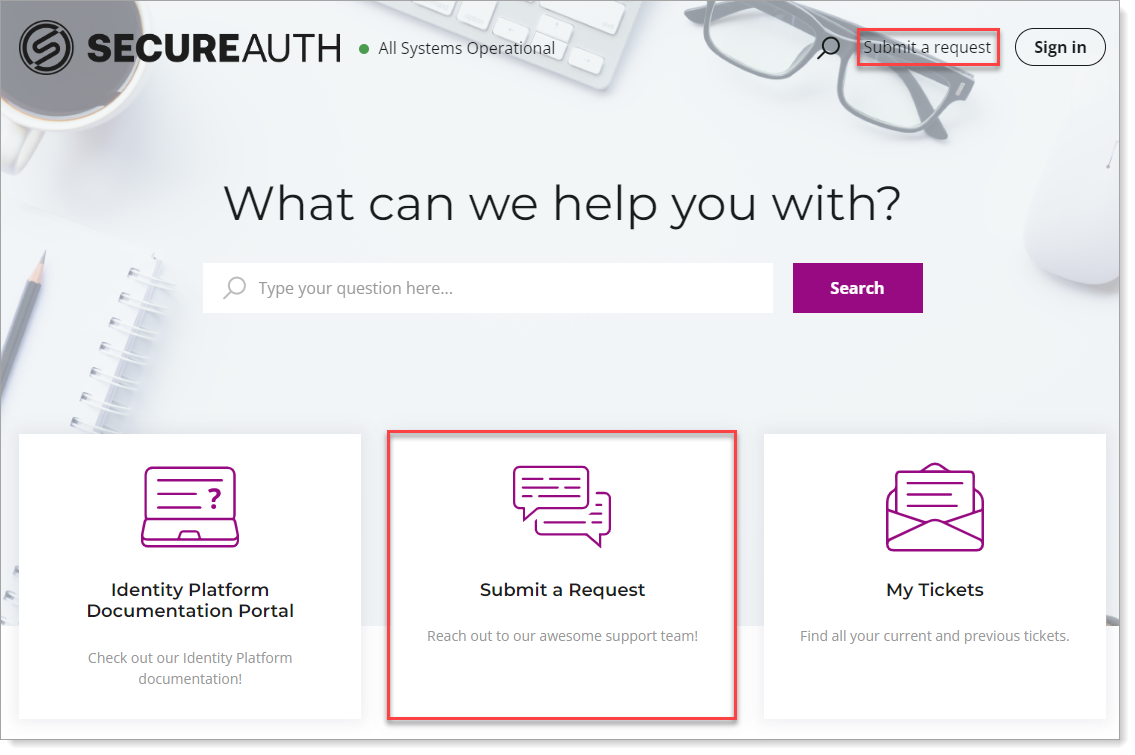
Select a reason for the request.
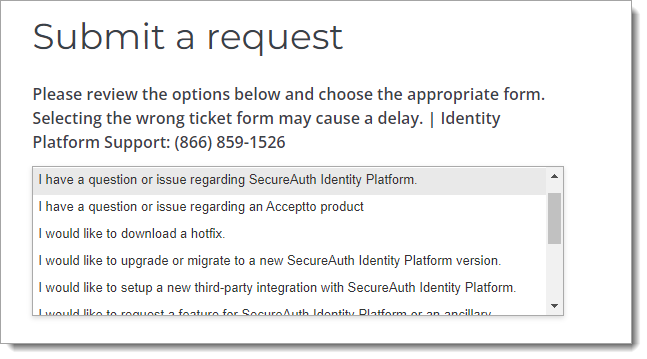
FIll out the form with the following information:
Note
The reason you chose in the previous step determines the type of fill-in fields that appears on this page.
CC
Optional. Provide additional email addresses for SecureAuth Support to contact about this inquiry.
For multiple email address, add a comma after each entry.
Subject
Provide a subject for the request that explains the main reason for contact.
A list of Suggested Articles that may relate to your subject appears. Click on any article to view.
Description
Provide a description that gives details of the current environment and what is required.
For example, this might include an explanation of the issue, the current configuration, the number of appliances, realms, and users that are affected, the timeframe for completion, etc.
SecureAuth IdP Version
Select the product version you want to learn more about.
For Identity Platform releases 19.07 or later, select Identity Platform.
Deployment Type
Select the deployment type your inquiry relates to.
The options are: Hybrid, Cloud only, or On-Premises
Windows Server OS
Optional. Select the Windows Sever operating system that you are currently running.
Impact
Select the level of impact this issue has on your company.
The options are: High, Medium, or Low.
See Priority assignments below to see how assignments are prioritized based on Impact and Urgency selections.
Urgency
Select the level of urgency this issue has.
The options are: High, Medium, or Low.
Attachments
(Optional) Add any attachments that could help SecureAuth resolve the issue.
For example, include screenshots of error, Web Admin configuration, etc.
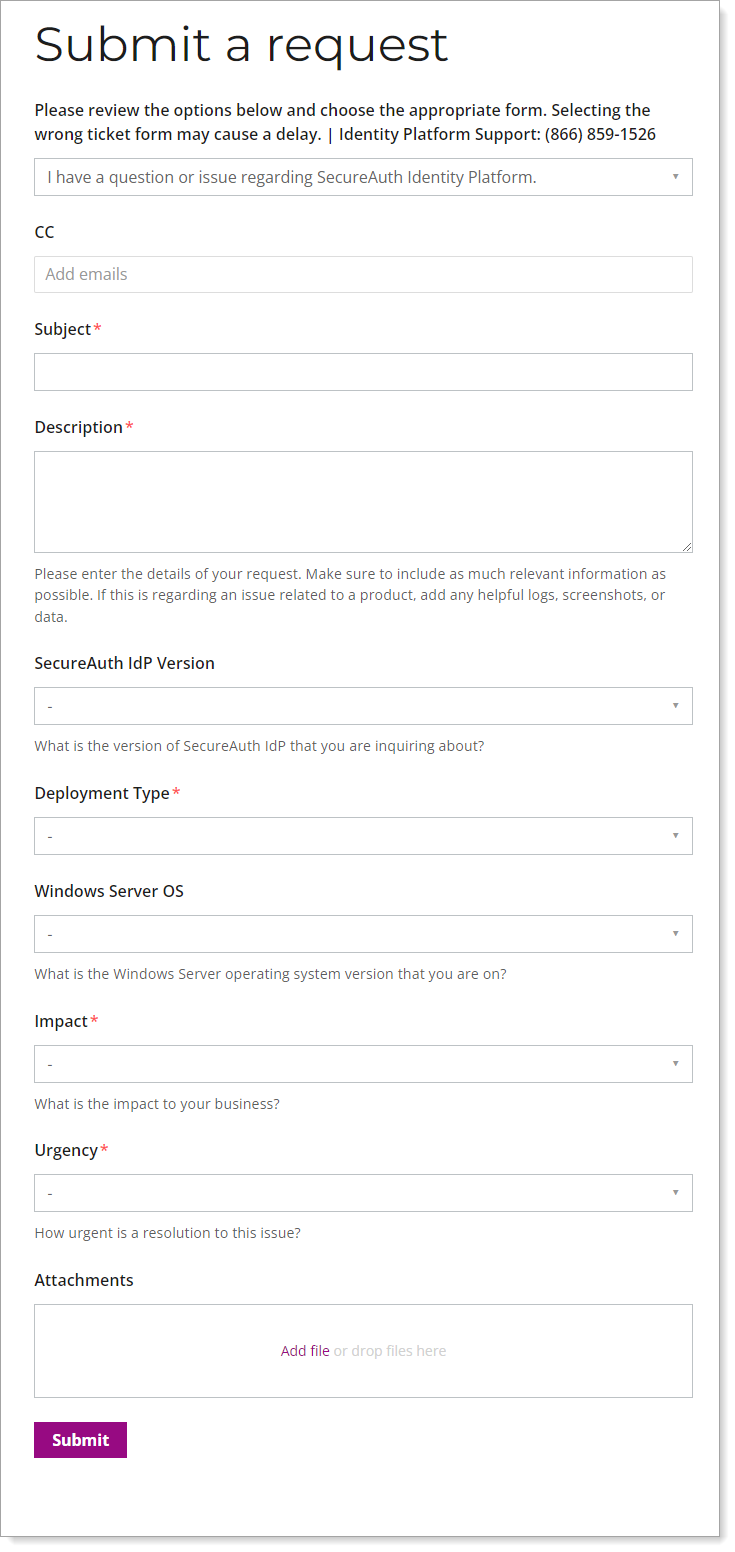
Click Submit.
Priority assignments
The following table describes how assignments are prioritized after tickets are in the system.
Impact | Urgency | Priority |
|---|---|---|
High | High | Urgent |
High | Medium | High |
High | Low | Normal |
Medium | High | High |
Medium | Medium | Normal |
Medium | Low | Low |
Low | High | Normal |
Low | Medium | Low |
Low | Low | Low |
Service Level Agreement (SLA) for Basic Support
Severity | Description | Response Time |
|---|---|---|
1 - Urgent | Coverage: 24 x 7 There is the potential of a health, safety, or security issue to occur or it has already occurred Potential for an operational or financial impact to the business A Business Critical, Tier 1 system, application, or function is completely unavailable, severely corrupted, or degraded for more than one authorized user Note: Severity Level 1 support requests cannot be logged through the support portal; call SecureAuth Support to log a severity Level 1 case | 4 hours |
2 - High | A non-business critical system, application, or function is unavailable, severely corrupted, or severely or degraded for a more than one authorized user | 8 hours |
3 - Normal | Level 3 is the default severity setting System performance is impaired, but there is no business or “customer” client impact for more than one authorized user | 1 business day |
4 - Low | A user level fault only affecting one authorized user but not affecting ability to perform business functions – i.e., no business or “Customer” client impact Enhancement requests | 2 business days |
Premier and Mission-critical Support customers can view SLAs for their plans.
Definitions
- Impact
The impact of the issue to the business.
Considerations:
Production appliance or test environment being affected
Number of users affected by issue
- Urgency
The speed in which the issue must be resolved.
- Priority
The level of importance the issue has compared to others, designating the SecureAuth Support response time.
Manage tickets
After a ticket has been submitted, users can view the requests and follow any updates. To manage your tickets, follow these steps:
On the Portal homepage, click your username and select My Activities.
Notice
Sign in is required before viewing activities.
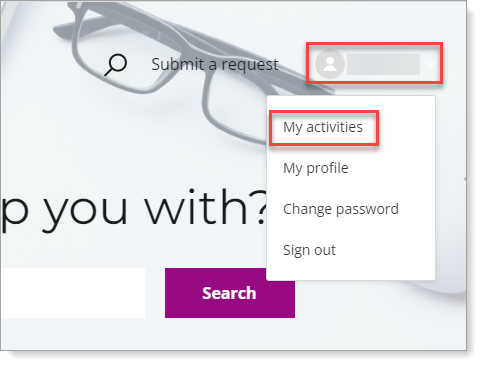
Submitted tickets appear in the My requests section listed with creation, activity, and status information.
Click the Subject of the request to view the ticket.
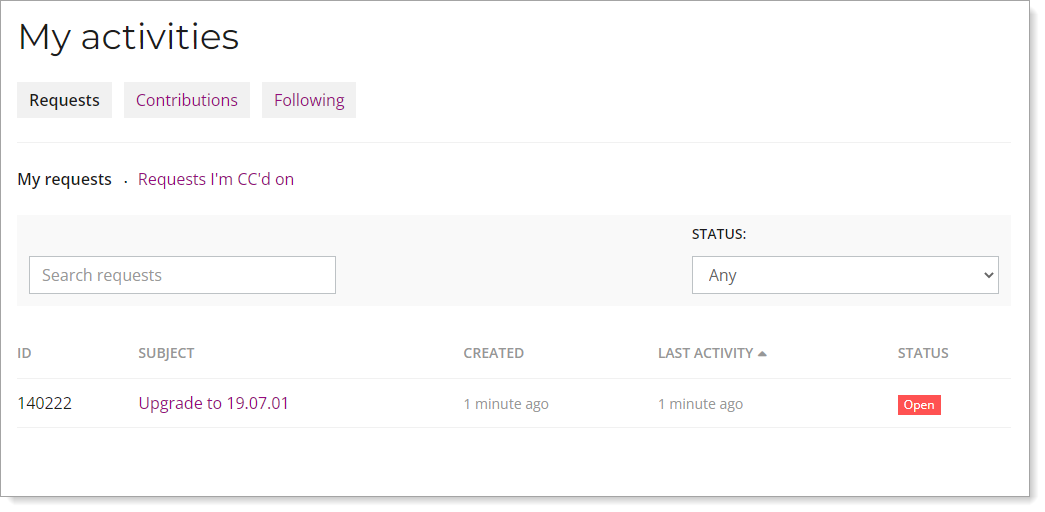
Replies to the ticket appear on the page as shown below, and users can continue communication here.
